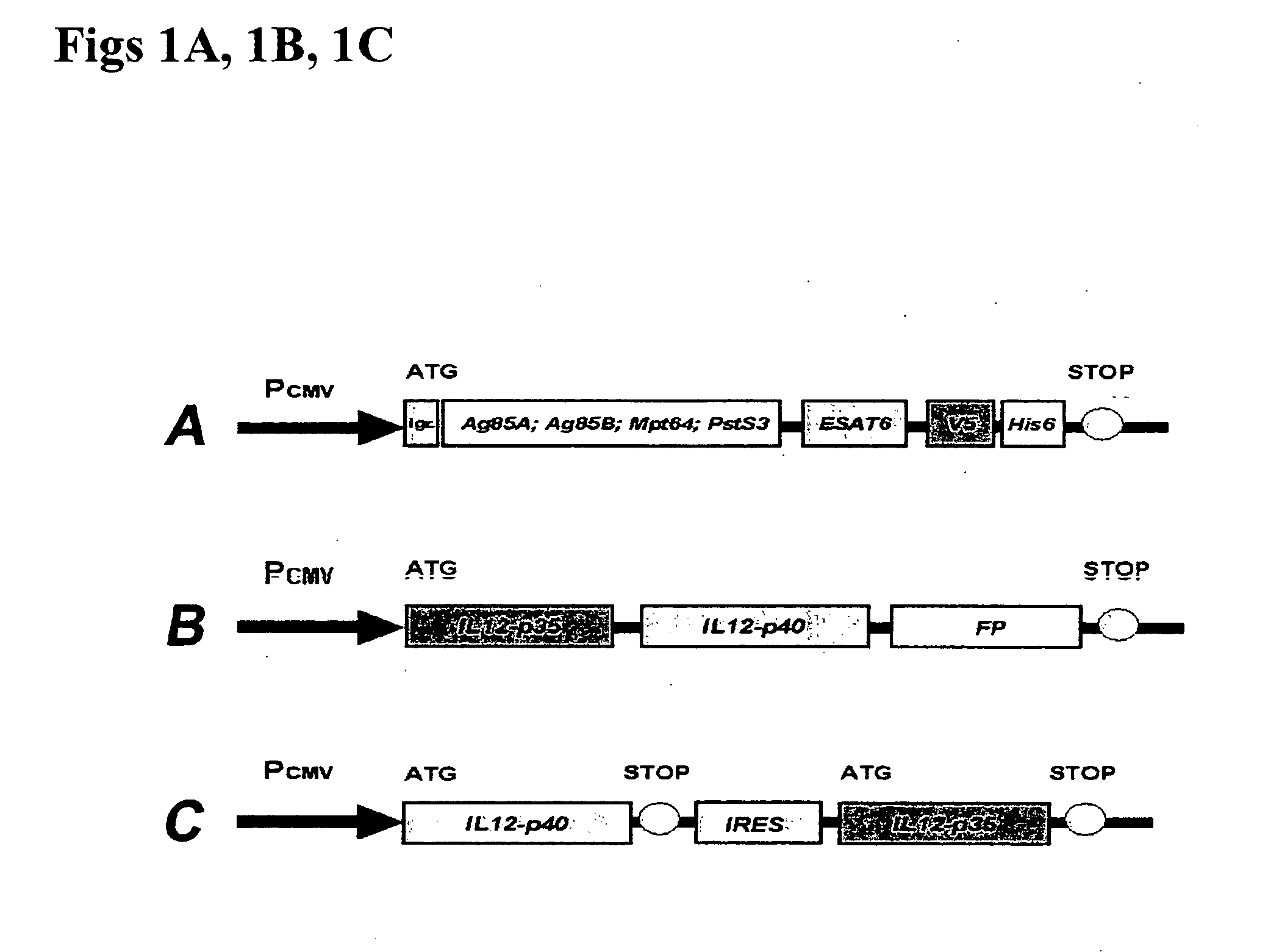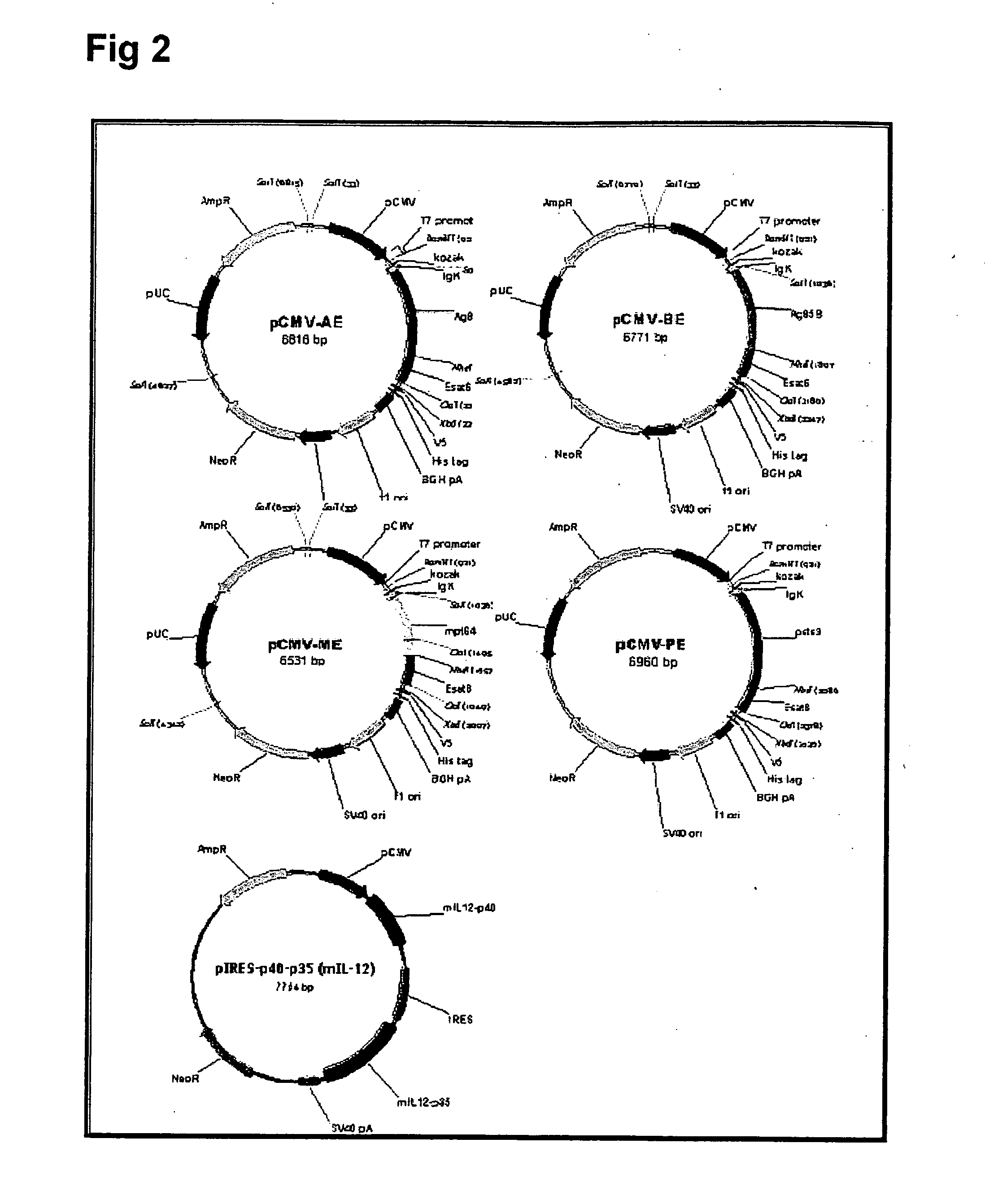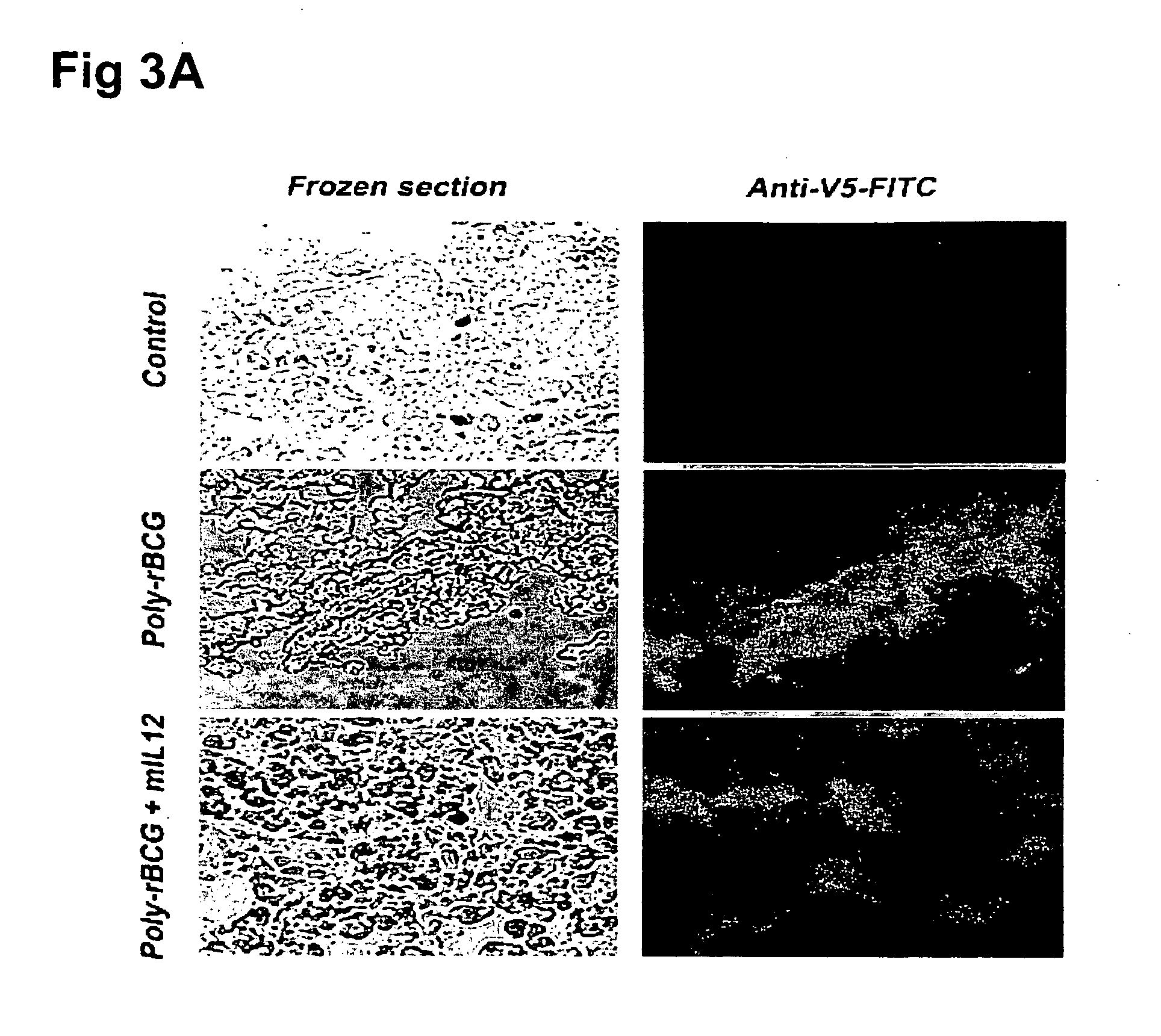DNA cancer vaccines
a cancer vaccine and dna technology, applied in the field of dna vaccines, can solve the problems of ineffective tumor vaccine development based on this approach, insufficient treatment effect, and inability to meet the needs of patients, so as to achieve effective attenuation or suppression of cancer cell growth, increase the activity of t cells, and reduce the effect of cancer cell growth
- Summary
- Abstract
- Description
- Claims
- Application Information
AI Technical Summary
Benefits of technology
Problems solved by technology
Method used
Image
Examples
example 1
Preparation of Vectors for DNA Vaccines
[0041] 1. Preparation vectors containing M. bovis BCG antigen nucleic acid sequences (recombinant BCG DNA vaccines) The human mycobacterial genomic DNA (M. bovis BCG) was used as a polymerase chain reaction (PCR) template to produce copies of the Ag85A, Ag85B, Mpt64, PstS3 and ESAT6 genes. The nucleic acid sequences of these BCG antigens are known and can be obtained from GenBank with access number of AY207395, AY207369, AY208674, AY207397 and AY207398 for Ag85A, Ag85B, Mpt64, PstS3 and ESAt6 gene, respectively. PCR was performed with gene-specific primers (see Table 1) for 30 cycles, and each cycle consisted of 15 sec at 94° C., 1 min at 56° C., and 2 min at 72° C. These DNA fragments were purified and ligated into a pCRII-TOPO vector (Invitrogen Life Technologies), and then subcloned into the eukaryotic expression vector pCMV-V5-His6 (Clontech Laboratories, Palo Alto, Calif.). The ESAT6 gene was ligated to the 3′-end of each of the other fou...
example 2
In Vivo Transfection / Inoculation of DNA Vaccines in Tumors and Muscle Tissues
[0043] 1. In Vivo Transfection / Inoculation of poly-BCG Vaccines or mIL-12 Vaccines in Tumors and Muscle Tissues Four rBCG DNA vaccines (plasmids coding for five immunogenic mucobacterial antigens and the mouse IG κ signal sequence) and heterodimeric mIL-12 DNA vaccine (pIRES-p40p35) were used. Briefly, 4- to 6-week-old femal C3H / HeN mice were anesthetized in groups of 8 with an intraperitoneal injection of ketamine HCl / xylazine (100 μg / 15 μg per mouse) before plasmid injection and electroporation. For the transfer of poly-rBCG intratumoral genes, MBT-2 cells (approximately 5×106 cells) were subcutaneously inoculated into the back of 5-week-old female C3H / HeN mice, and tumors were allowed to develop for about 2 weeks. The tumors were then excised and chopped into small pieces, and equal amounts of tumor were subcutaneously inoculated into the right flank of 6-week-old mice. Then, 1 to 2 weeks after inoculat...
example 3
Poly-rBCG DNA Vaccines Activate T-Cell Immune Response
[0049] C3H / HeN mice were first transplanted with MTB-2 tumor according to the procedure described in Example 2, and were then immunized via EPGIT with poly-rBCG vaccine, mIL-12 vaccine, poly-rBCG+mIL-12 vaccines or empty vector (i.e., pCMV-V5-His6 as the control group). The mice were then sacrificed on the 7th day after vaccination, and detection of T-cell markers (such as CD4 and CD8a), B-cell marker (such as CD 19) and macrophage (such as F4 / 80) was assessed in paraffin-embedded sections by using the avidin-biotin-peroxidase complex method described by Morimura et al (see Morimura et al., “angiogensis in adipose tissue after diet-restriction in rabbits”, Int J Mol Med (2001) 8:499-503.). Briefly, the 4-μm-thick sections were deparaffinized and then treated with 3.0% hydrogen peroxide (Sigma-Aldrich, St. Louis, Mo.) to block endogenous peroxidase activity. Subsequently, antigen retrieval procedures for formalin-fixed paraffin s...
PUM
| Property | Measurement | Unit |
|---|---|---|
| Current | aaaaa | aaaaa |
| Digital information | aaaaa | aaaaa |
Abstract
Description
Claims
Application Information
 Login to View More
Login to View More - R&D
- Intellectual Property
- Life Sciences
- Materials
- Tech Scout
- Unparalleled Data Quality
- Higher Quality Content
- 60% Fewer Hallucinations
Browse by: Latest US Patents, China's latest patents, Technical Efficacy Thesaurus, Application Domain, Technology Topic, Popular Technical Reports.
© 2025 PatSnap. All rights reserved.Legal|Privacy policy|Modern Slavery Act Transparency Statement|Sitemap|About US| Contact US: help@patsnap.com



